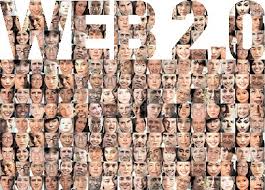Sunday, April 14, 2013
Is there a Web 3.0?
One's on the way. It's a topic for a different FAQ, certainly. But discussion of the Web's 3.0 iteration has centered on back-end issues such as separating presentation technology and the data, developing and using the so-called semantic Web, and artificial intelligence.
What are the hallmarks of Web 2.0? How is it different from the regular Web?
Web 1.0 was the initial great rush to populate the Web with pages of information connected by hypertext links. In the later years of the period, many of those pages were driven by databases behind the scenes, but the average person couldn't see much difference.
As high-bandwidth, always-on access became more widely available and Internet usage increased, some sites developed ways of utilizing data from that usage. Some of that data was gathered by the systems themselves, such as Amazon.com Inc.'s "also purchased" feature ("Customers who bought this item also bought..."). A great deal was contributed directly by users, generally in the form of short reviews, comments or suggestions. Though relatively few users participated heavily in such collaboration, the ability to collaborate encouraged the development of a remarkable "group wisdom" on such sites.
Over time, collaboration moved to the heart of the Web 2.0 experience. Sites such as those of Craigslist Inc., eBay Inc. and MySpace.com Inc. provide three very different experiences, but all are entirely predicated on user contributions and interactions between those users.
Meanwhile, community-centric sites such as Slashdot and Digg relied on readers to contribute links (usually to news stories) that might be of interest to the community, to describe and comment on the contributions, and to moderate (and thus provide first-line filtering of) other users' comments. This gathering function has become a de facto answer to Web 1.0's information-dispensing model -- rather than consuming the news as presented under a single brand (such as USA Today or The New York Times), those using a Web 2.0 news-gathering model tend to check community-driven aggregation sites for pointers to specific stories on the news sites. A few news-gathering sites dispense with the human element altogether, relying on robots to parse and numerically weighting the importance of news stories as they happen.
What are the disadvantages of using the elements that Web 2.0 covers?
-Viruses can be found
 -Some loading take too long to process
-Some loading take too long to process
-Info cannot be made private
-Disagreements or arguments may occur
-Unpleasant comments or opinions may occur
-Blogs and information are limited
-Security forms need to be filled and sent to the manager of the network being using in Web 2.0
Tuesday, April 9, 2013
Which elements of Web 2.0 suits your need as a student?
Educational based elements as social networking elements.
What are the benefits/advantages of using the elements that web 2.0 covers?
Information can flow freely. Internet users can easily express their ideas and opinions on things without any fear or apprehension. internet becomes more personalized. Internet users have different needs and preferences. But through this advanced technology, they can easily acquire information that is tailored according to their needs, interests and preferences.It makes a website more user‐friendly and functional. Internet users can easily navigate through the pages and find the information they need. It improves navigation of both internal and external pages, which is very important for various businesses in increasing their sales of products and services.It enhances the quality of interaction among internet users from all over the world. It allows users to easily read and post views, experiences, thoughts, and comments about a variety of things. It entails simple web design and adds more focus and convenience to the website so users can access more information.
What kind of people use Web 2.0?
Everyone uses web 2.0 in our generation, but mainly teenagers, young adults and buisness men/women.
How did Web 2.0 develop in today's society?
The term Web 2.0 was coined in 1999 by Darcy DiNucci, a consultant on electronic information design in her article “Fragmented Future” and became closely associated with Tim O’Reilly who used it in a Media Web 2.0 conference in 2004 to describe the future, as he saw it, of the World Wide Web. T
he term, seen by many as misleading, stuck. Tim Berners-Lee, the inventor of the web, labeled the term “a piece of jargon.”
Although the term Web 2.0 implies a new or updated version of the World Wide Web this couldn’t be further from the truth.
There were, and have not been, any technical updates to the Web.
What is Web 2.0?
Web 2.0 is the term given to describe a second generation of the World Wide Web that is focused on the ability for people to collaborate and share information online.
Web 2.0 basically refers to the transition from static HTML Web pages to a more dynamic Web that is more organized and is based on serving Web applications to users.
Other improved functionality of Web 2.0 includes open communication with an emphasis on Web-based communities of users, and more open sharing of information.
Over time Web 2.0 has been used more as a marketing term than a computer-science-based term. B
logs, wikis, and Web services are all seen as components of Web 2.0.
Subscribe to:
Posts (Atom)
